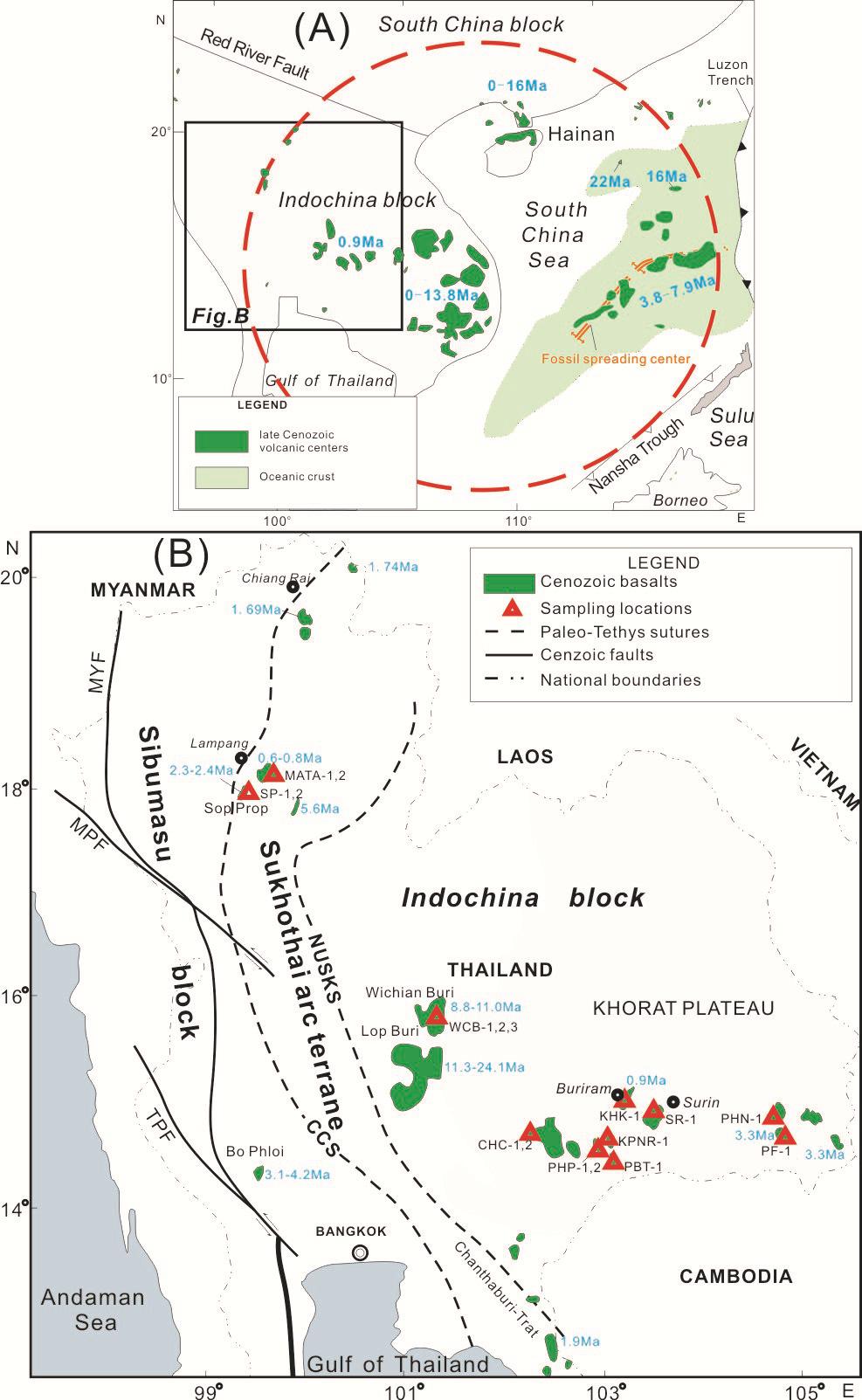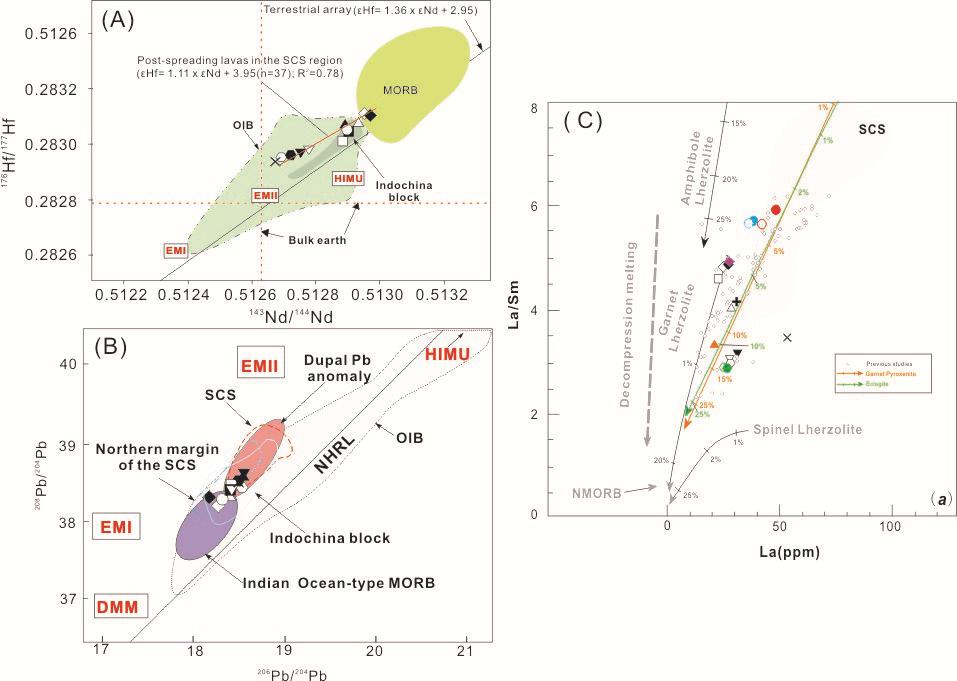FIO Scientists Made New Petrology Breakthroughs of South China Sea
On 8 February 2018, the new findings on petrology by YAN Quanshu and SHI Xuefa of FIO/ QNLM and Thai scientists were published on Scientific Reports (of Nature). This research finds that the intraplate volcanism initiated shortly after the cessation of Cenozoic seafloor in the South China Sea (SCS) region can extent its influence to the west part of Thailand, which locates inside of the Indochina Peninsula, and suggests that the post-spreading intraplate volcanism in the SCS region was induced by a Hainan mantle plume.

(A) Distribution of late Cenozoic intraplate volcanism in the SCS region and the influence of Hainan mantle plume
(B) Sampling locations of Thailand Cenozoic Basalts
The South China Sea (SCS) region located in the convergence zone between the Eurasian plate, Indo-Australian plate and Philippine Sea plate (Pacific plate), having various geological phenomenon and geodynamic process. The integrated effects from surrounding plates affect Cenozoic geological evolution of the SCS region and Southeast Asia. At the same time, the continental breakup is changing to sea-floor spreading. After the cessation of Cenozoic seafloor spreading for 32-16 million years of the SCS, intraplate volcanism almost simultaneously affected large areas in the SCS region, e.g., the Pearl River Mouth Basin, Leiqiong Peninsula, Beibu Gulf and Indochina Block. The study on intraplate volcanism is pivotal to know the “Past, Present and Future” of the SCS region. However, till now the geodynamic setting of the intraplate volcanism in the SCS region is still debated.
Based on the element data of late Cenozoic Basalts and Sr-Nd-Pb-Hf isotope ratios of late Cenozoic basaltic lavas from the Khorat plateau and the Paleozoic Sukhothai arc terrane in Thailand jointly acquired by China and Thailand scientists, they revealed the geodynamic background of the late Cenozoic Basalts. According to the petro-geochemistry features, these basalts are alkali basalts and similar to the geochemical features of ocean islands basalts in elements and isotopes.
The newer the basalts become, the richer they store in the source region. Therefore, the similar geochemical features with contemporaneous basalts of Pearl River Mouth Basin, Leiqiong Peninsula and southern Vietnam indicates the relevance of their cause factors to Hainan mantle plume.

(A) Tracing of Nd-Hf in source region
(B) Pb-Pb scheme
(C) Partial melting models
In the past decade, sponsored by NSFC (Natural Science Foundation of China) and Aoshan Innovation Plan, SHI Xuefa, YAN Quanshu and their research team have made Innovative outcomes in Petrology of the SCS region and published several academic papers. Their great contributions to finding Mesozoic/Cenozoic structure evolution evidence in the SCS region has been widely cited and recognized by domestic and foreign peers.
Source of Paper: Yan Q*, Shi X*, Metcalfe I, Liu S, Xu T, Kornkanitnan N, Sirichaiseth T, Yuan L, Zhang Y, Zhang H. 2018. Hainan mantle plume produced late Cenozoic basaltic rocks in Thailand, Southeast Asia. Scientific Reports, 8(2), dio: 10.1038/s41598-018-20712-7.
(Link: www.nature.com/articles/s41598-018-20712-7)


